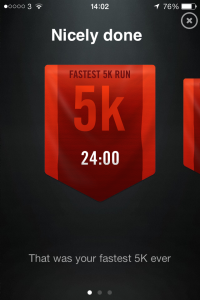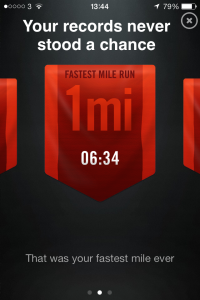I have published a couple of workouts but wanted to back them up with a bit of credibility and show that a structured plan improves run times…or at least has with me.
I had just completed the Blenheim Palace Sprint Triathlon, my first ever triathlon event. I really enjoyed it but I struggled towards the end. I really struggled. My run became my nemesis.
I had put the work in and was really pleased with my level of fitness and performance prior to the event, I was really happy with my swim and the bike went ok but on the day I felt my run really let me down.
I knew I was putting in the volume of training but wasn’t seeing the gains and improvements I had hoped for.
A bit at a loss, I went to see Aaron Morton at Absolute Health. He explained that training was more than just putting in the miles in, which to an extent is what I had been doing – focusing on running, swimming and cycling but neglecting the core elements I needed for triathlon – strength and stamina.
He created a plan based on interval and weights, all designed with the end result in mind of speeding up my run time without impacting on my cycle and swim that I was already happy with. The plan actually reduced the amount of training I needed to do – training smarter, not harder. He created the Kettle Bell Workout and the Killer Sprint Routine (these are my names for them). At first I was more than a little sceptical. Surely to improve my running, I actually needed to put some miles in, not just do a few squats and run 400 metres.
So in June I set about working on my plan. Encompassing the training I wanted to measure my successes. I was doing these routines two or three times a week, with my regular swim, bike and run sessions added in too.
I planned a nice steady route and aimed to do a 5km run every week or two and keep track of how I got on. I kept my route the same throughout so I could be almost scientific about it.
My previous 5km times were not far off 30 minutes. And in May I ran it in 27:49. I’m happy with a sub 30 minute run but knew there was room for improvement.
Here is how my progress went, they are noted in fastest times for a 5km run, mile and a km.
16/06/13
24/06/13
23/07/13 5km – 24:36
28/07/13
I started throwing in a few brick sessions from my bike. And on 08/08/13 was really pleased with a 26:29 for 5km. No PB but making improvements on my stamina and pace. I carried on with my scientific study and the results kept coming.
10/8/13
24/08/13
Within two months you can see my hard training got the results I wanted.
I then went on holiday for a week and upon my return I completed the Cotswold Sprint Triathlon.
Me slowing down to a plodding finish at the Blenheim Palace Sprint Triathlon
This is me going for a sprint finish at the Cotswold Sprint Triathlon
To put into context my Blenheim Palace time was 1 hour and 47 minutes, with the run split at 34 minutes and 53 seconds. This was at the beginning of June.
By the beginning of September my Cotswold Tri time was 1 hour and 21 minutes, with the run split at 24 minutes and 26 seconds.
I’m really pleased with that! I hope this gives you the motivation to give it a go and see great results.
My plan for the new year is to up the run training and carry on with the workout routines to be able to consistently drop into the sub 20 min category in the new year and see my results get even better.
![1011195_10152973453815525_965207962_n[1]](https://kurtswallow.wordpress.com/wp-content/uploads/2013/12/1011195_10152973453815525_965207962_n1.jpg?w=300&h=200)
















![1044871_10152973454705525_762429446_n[1]](https://kurtswallow.wordpress.com/wp-content/uploads/2013/12/1044871_10152973454705525_762429446_n1.jpg?w=300&h=200)

Thanks for linking me to your blog. Appreciate it.